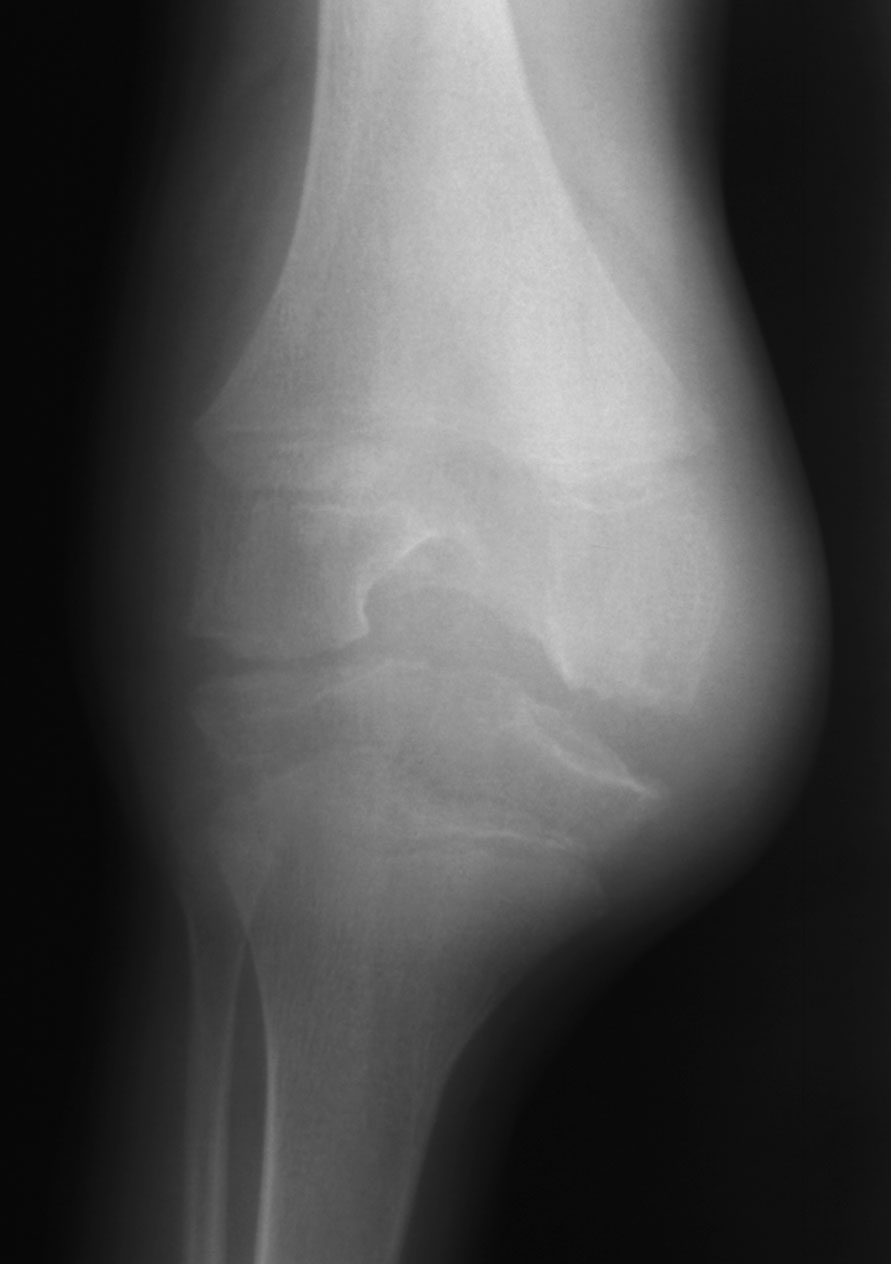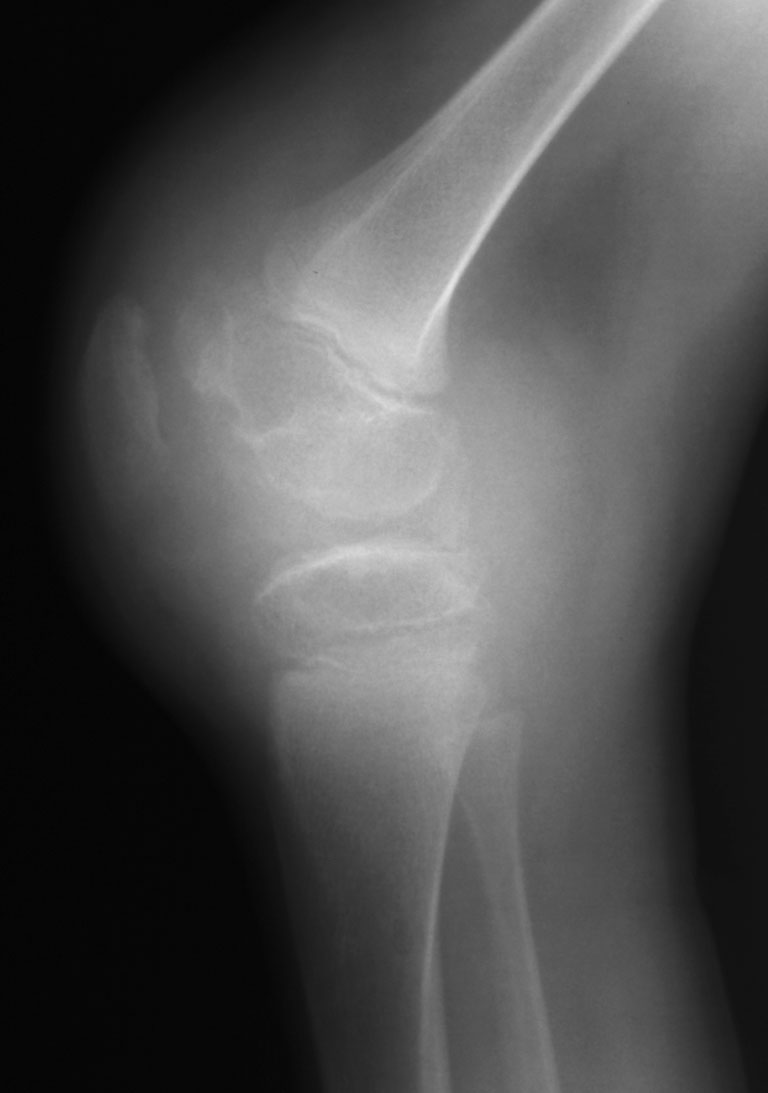Pediatric Radiology > Musculoskeletal > Metabolic Diseases > Hemophilia
Hemophilia
![]()
|
Hemophilia is a bleeding disorder which can have profound musculoskeletal sequelae. Roughly 90% of patients with hemophilia suffer from spontaneous hemarthroses, many of which are recurrent. Typically, these hemarthroses are monoarticular and occur most frequently in the knee > elbow > ankle. Hemosiderin is deposited within the synovium of the affected joint leading to synovial hypertrophy, which in turn can lead to destruction of the underlying articular cartilage. Radiographic appearance: Acute findings
Chronic findings
|
|

|
|
